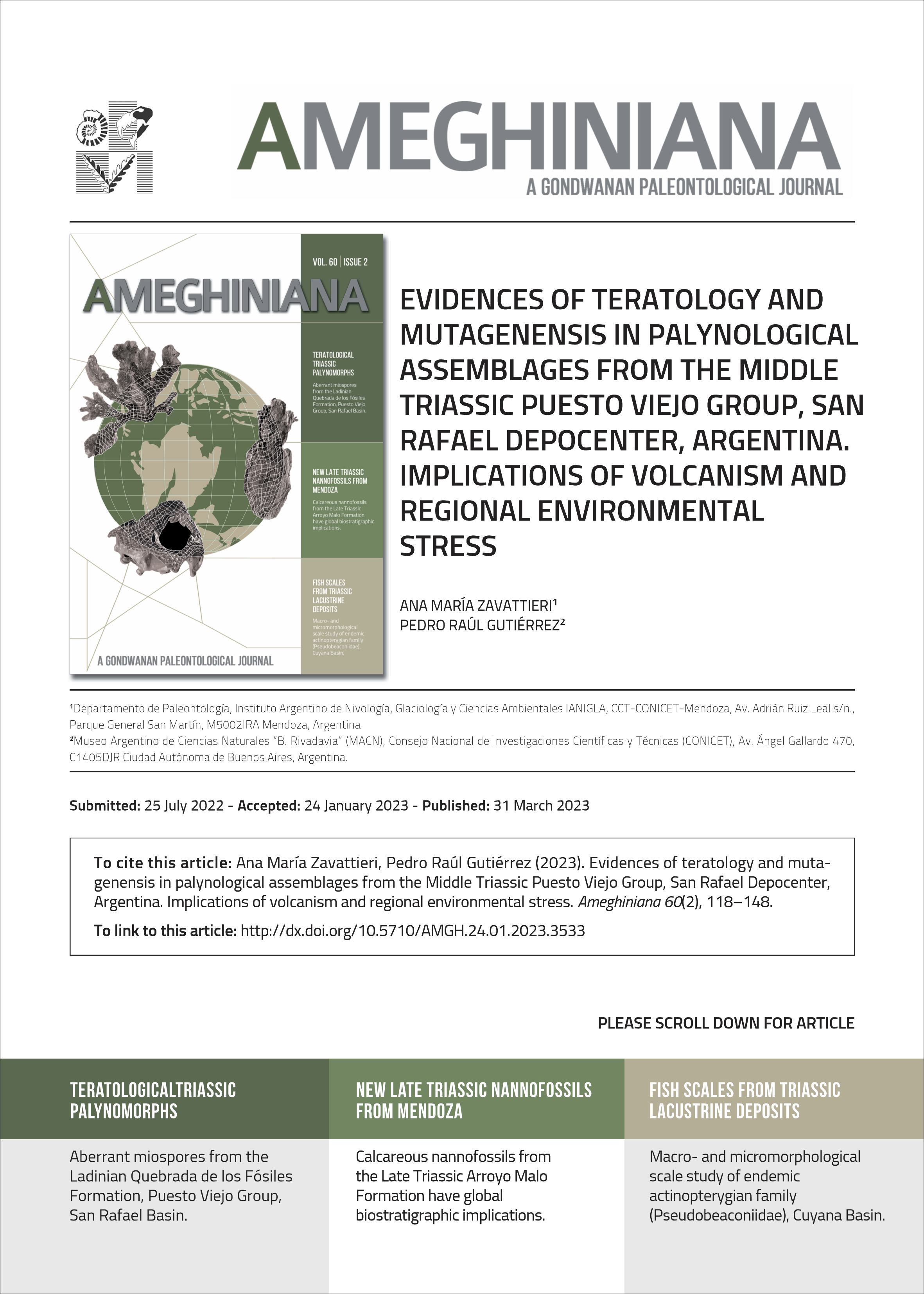EVIDENCES OF TERATOLOGY AND MUTAGENENSIS IN PALYNOLOGICAL ASSEMBLAGES FROM THE MIDDLE TRIASSIC PUESTO VIEJO GROUP, SAN RAFAEL DEPOCENTER, ARGENTINA. IMPLICATIONS OF VOLCANISM AND REGIONAL ENVIRONMENTAL STRESS
DOI:
https://doi.org/10.5710/AMGH.24.01.2023.3533Keywords:
Teratology, Mutagenesis, Palynology, Paleoenvironmental stress, Middle Triassic, San Rafael Basin, VolcanismAbstract
Evidence of teratogenesis and mutagenesis documented in the palynological assemblages of the Middle Triassic Quebrada de los Fósiles Formation, San Rafael Depocenter (Mendoza, Argentina) provide an independent testimony of deteriorating atmospheric conditions at the time of sedimentation of the lower unit of the Puesto Viejo Group. Considerable explosive acid volcanism occurred during the deposition of the continental alluvial-fluvial systems of this unit, and its consequent effects on climate created stressful and adverse conditions that influenced the paleoenvironments and vegetation. To assess the degree of teratology, we characterize malformation categories for each lineage of plants represented in the dispersed palynomorphs (spores, saccate pollen, and algae) recorded in the Quebrada de los Fósiles microflora. Additionally, typical fused spores are associated with malformed tetrads, triads, and dyads which reflect reactions of the autochthonous plants (sphenophytes, ferns, bryophytes, and lycophytes) to adverse environmental conditions. Unusual morphologies are also evident in some aquatic zygospores of green algae that colonized the freshwater bodies within fluvial systems of the middle and upper sections of this unit. The palynological preparations also contain dispersed leaf cuticle fragments showing xeromorphic features that reveal mutagenetic responses of plants to paleoenvironmental stresses. The co-occurrence of morphological aberrancies observed in different lineages of palynomorphs is consistent with previous interpretations that the terrestrial and aquatic vegetation of the Quebrada de los Fósiles Formation grew in disturbed floodplain environments affected by intermittent volcanic episodes under temperate to warm seasonal arid to semiarid climatic conditions. In this contribution, we document the first clear diversity of teratological traits independently developed across different lineages of plants and possibly algae synchronously coinciding with intense explosive volcanism within the same region in the Middle Triassic.

Downloads
Additional Files
Published
Issue
Section
License
Authors publishing in Ameghiniana have the option of making their article freely available online. Authors opting for the Open Access must pay a fee of $300 (US dollars) to cover article-processing costs and to ensure the article is made open access. Please contact the Production Team after the acceptance of your manuscript if you are interested in making your article Open Access. This option implies by default a license Creative Commons Attribution Non-Commercial-NoDerivs License (CC BY NC ND). If your funding institution requires a different licensing option please communicate this to the Production Team after the acceptance of your manusctipt.










